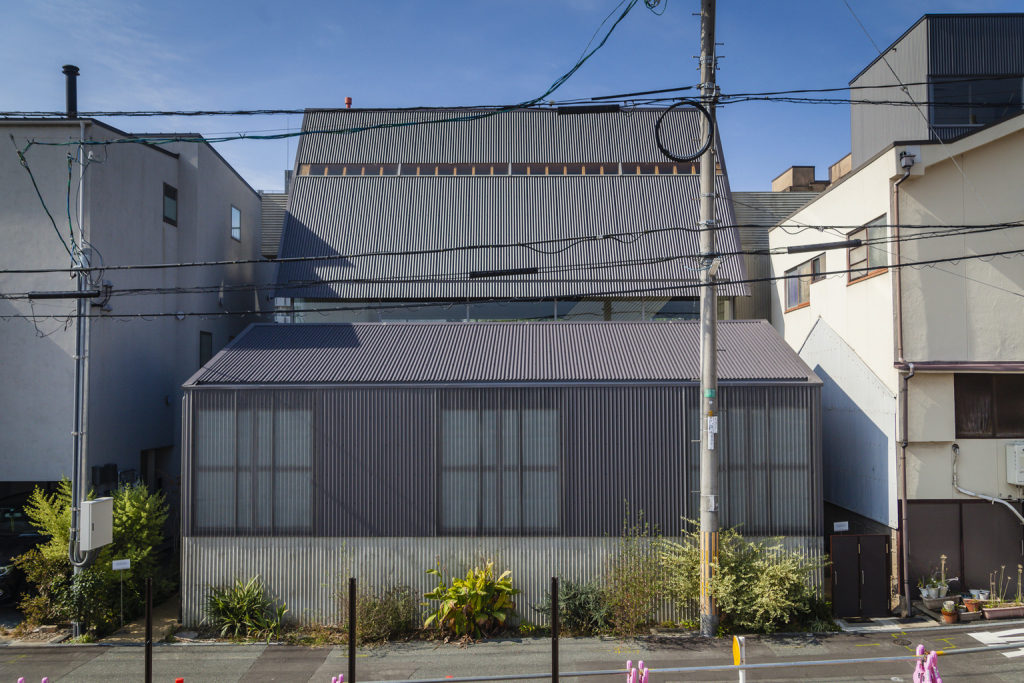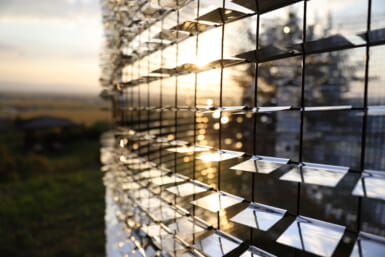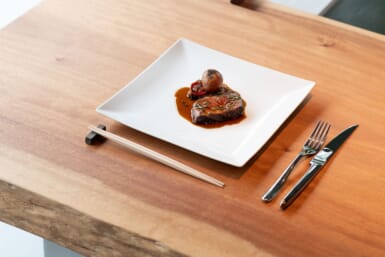Home to the legendary Japanese folktale Momotaro and the birthplace of dazzling contemporary author Yoko Ogawa, Okayama is a prefecture and city which are innovative hubs for art and creative industries in Japan.
In The Memory Police, Ogawa writes, “When the surface of your soul begins to stir, I imagine you want to capture the sensation in writing.” When Okayama’s soul and heart stirs, however, it seems to capture the moment in art and spaces made for immersing yourself in the local terroir.
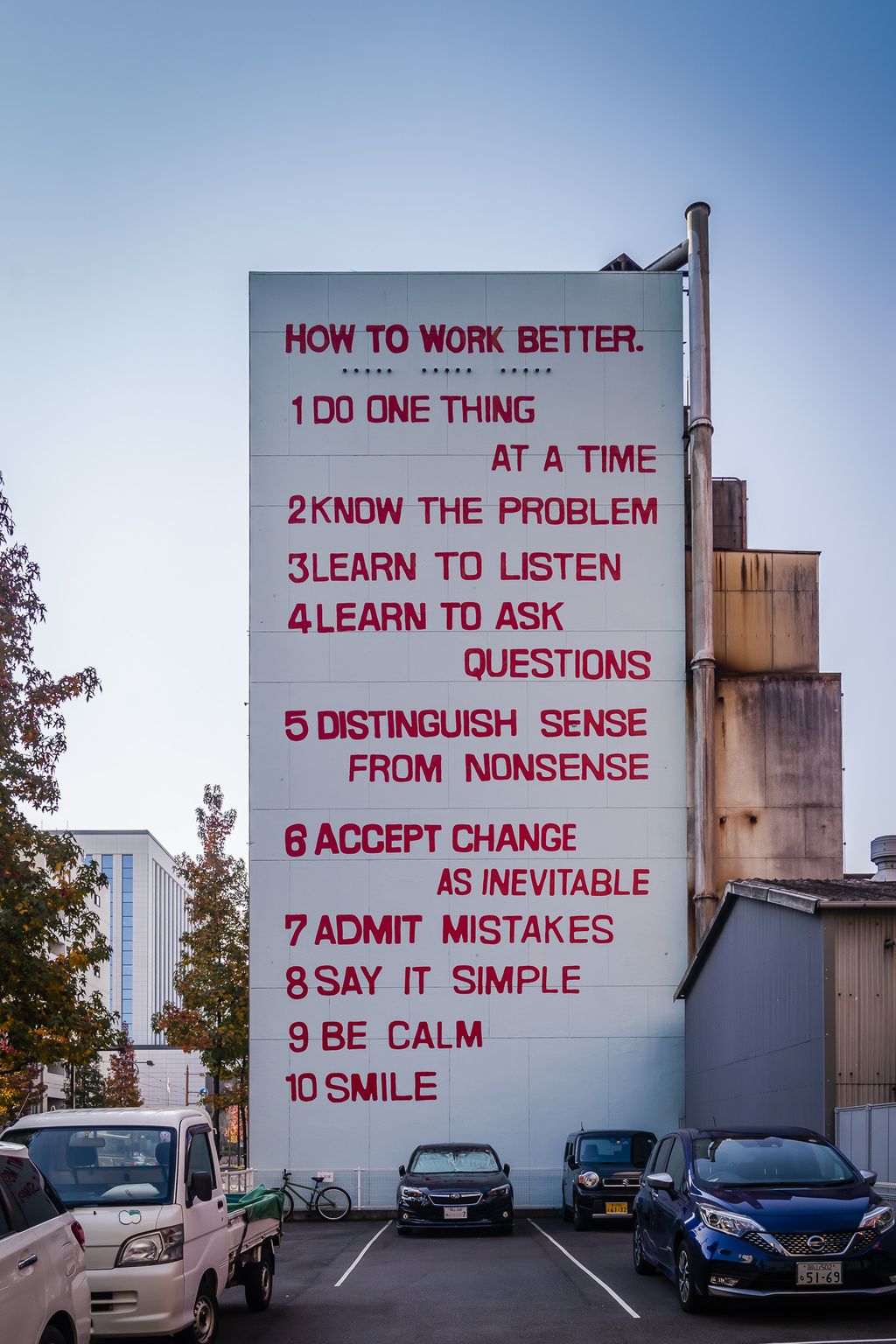
“How to Work Better”
Art in the Wild
Okayama City is a living and thriving testament to its love for art and when traversing the city streets art is, predictably, everywhere. This is in addition to an enviable wealth of art spaces which are located throughout the urban center and beyond. First up is Peter Fischli and David Weiss’ seminal “How to Work Better” which takes aim, perhaps, at so-called knowledge or self-help utterances. No matter how you take it, this artwork is essential viewing and can stop you in your tracks.
Where to spot “How to Work Better”: 1-6-15 Omotecho, Kita-ku
British New York-based artist Liam Gillick, former artistic director of Okayama Art Summit 2016, displays his colorful and standout installation named “Faceted Development” on the street and since its unveiling has become a staple of Okayama’s public art landscape.
Where to spot “Faceted Development”: 1-1 Marunouchi, Kita-ku
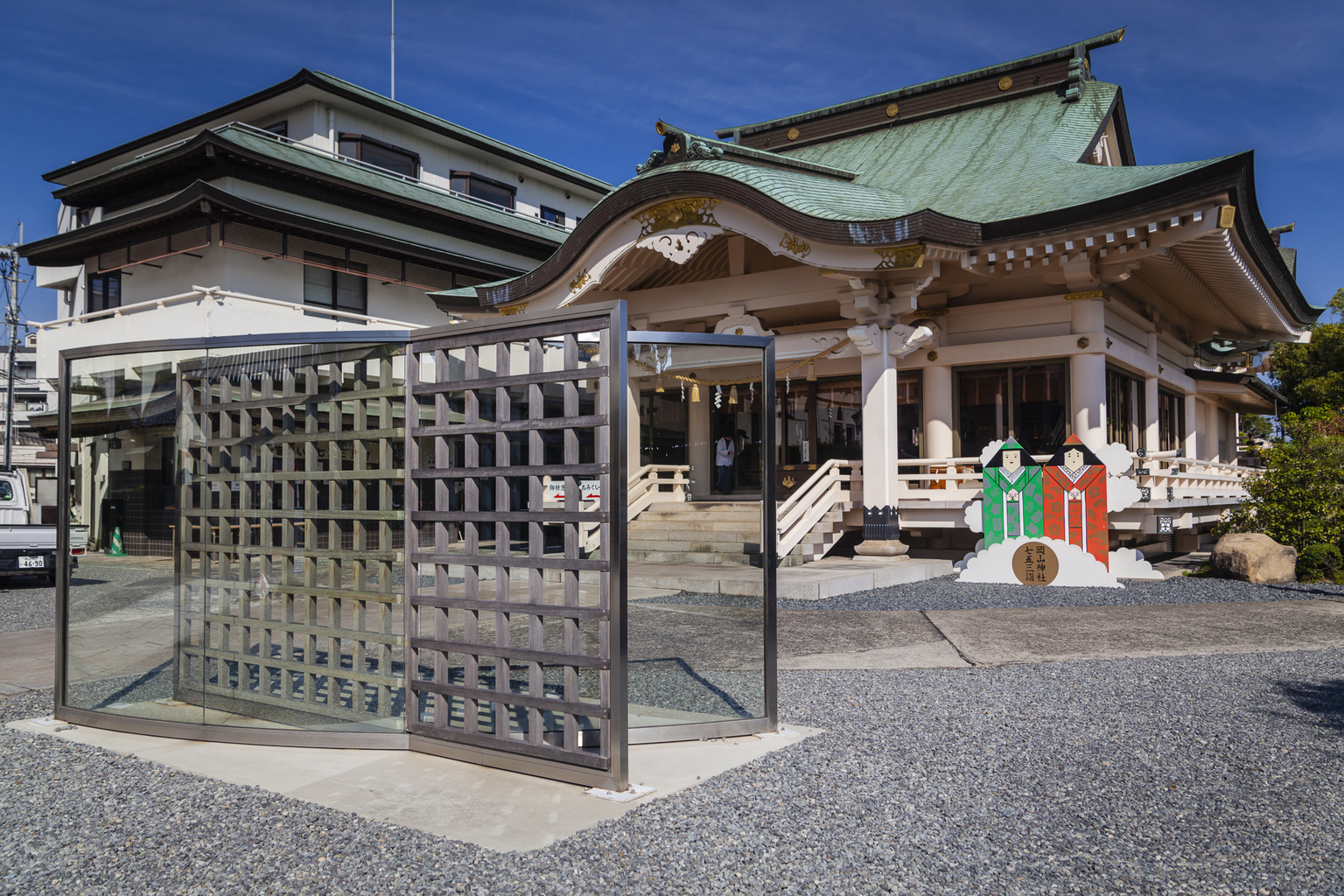
“Half Mirror”
Another New Yorker is Dan Graham whose “Wood Grid Crossing Two-way Mirror” is on display in front of Okayama Shrine. This particular work is reminiscent of Japanese shoji (a traditional sliding door) and is inspired from Graham’s time spent and experiences in Japan. A visceral engagement on the subject of seeing this work can be seen as a metaphorical and literal reflection of ourselves and the local environment.
Where to spot “Half Mirror”: 2-33 Ishizekicho, Kita-ku
Art Institutions To Add to Your Itinerary
In addition to street art, Okayama City will have you spoilt for choice when it comes to art institutions. From samurai manors to digital museums, be sure to add some, if not all, to your list of places to visit.
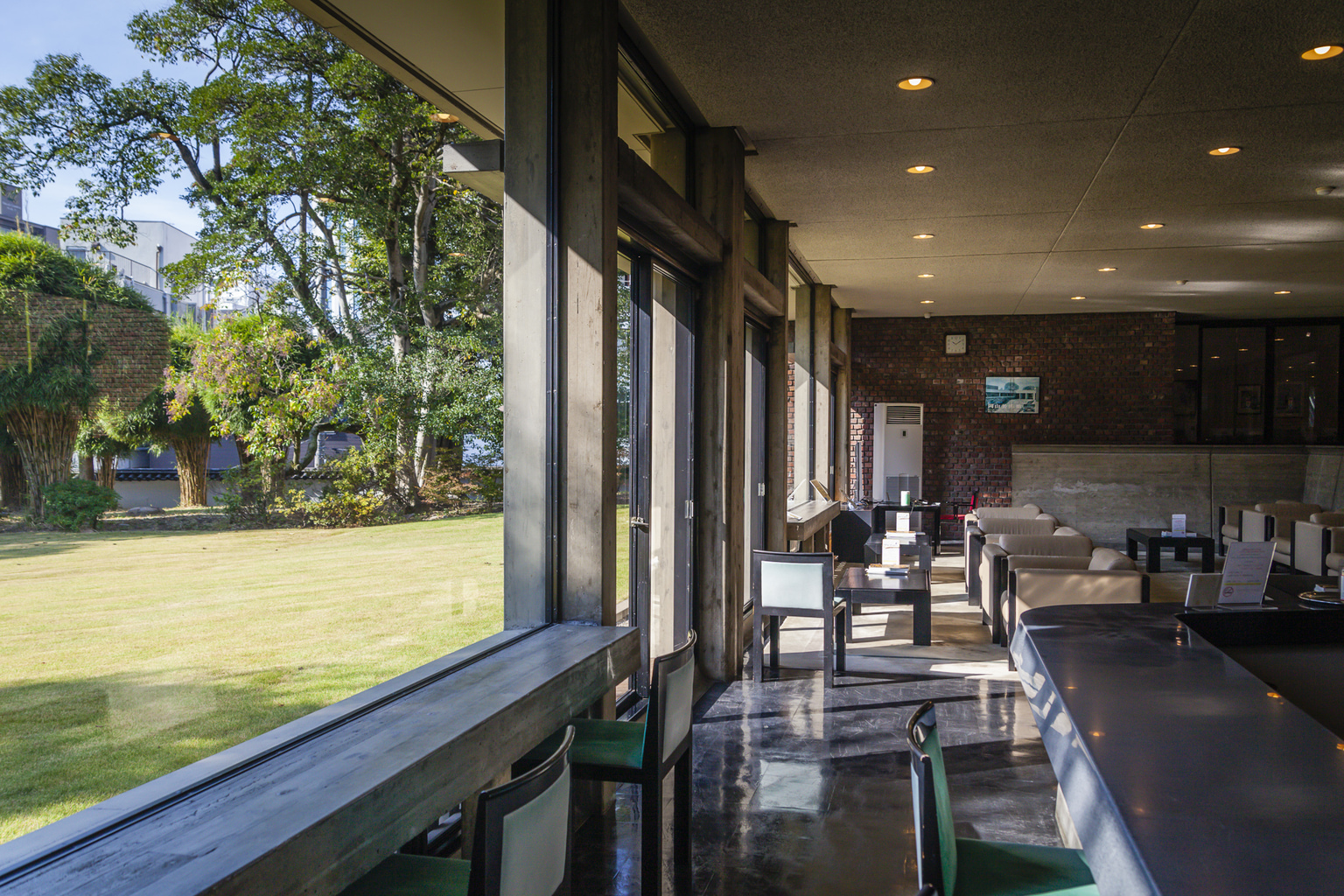
Hayashibara Museum of Art
Hayashibara Museum of Art
Established in 1964, Hayashibara Museum of Art is situated in the area of the inner moat of Okayama Castle. With a revolving collection of work from local businessman Ichiro Hayashibara’s amassment of swords, armor, pottery, noh costumes and masks, furniture, paintings, calligraphy, and lacquer ware, the museum is a must-visit.
2-7-15 Marunouchi, Kita-ku
A&A Jonathan Hasegawa
There are, of course, spaces where relaxation and art combine in Okayama. One of these major fulcrums comes in the form of the curiously named A&A Jonathan Hasegawa, a hotel which is the result of a collaboration between Berlin-based artist Jonathan Monk and Japanese architect Go Hasegawa. Inspired by the house which sat on the hotel space in preceding years, it reflects Monk’s artistic oeuvre which focuses on imitation and reinterpretation. A&A Jonathan Hasegawa is a space that combines Okayama’s innate traditions with new and innovative design. The upper levels of the hotel overlook the renowned Korakuen Garden. The building is part of the A&A Project, where world-renowned contemporary artists and Japanese architects join forces to develop accommodation facilities around historical and cultural areas in Okayama City.
1-6-7-1 Izushicho, Kita-ku
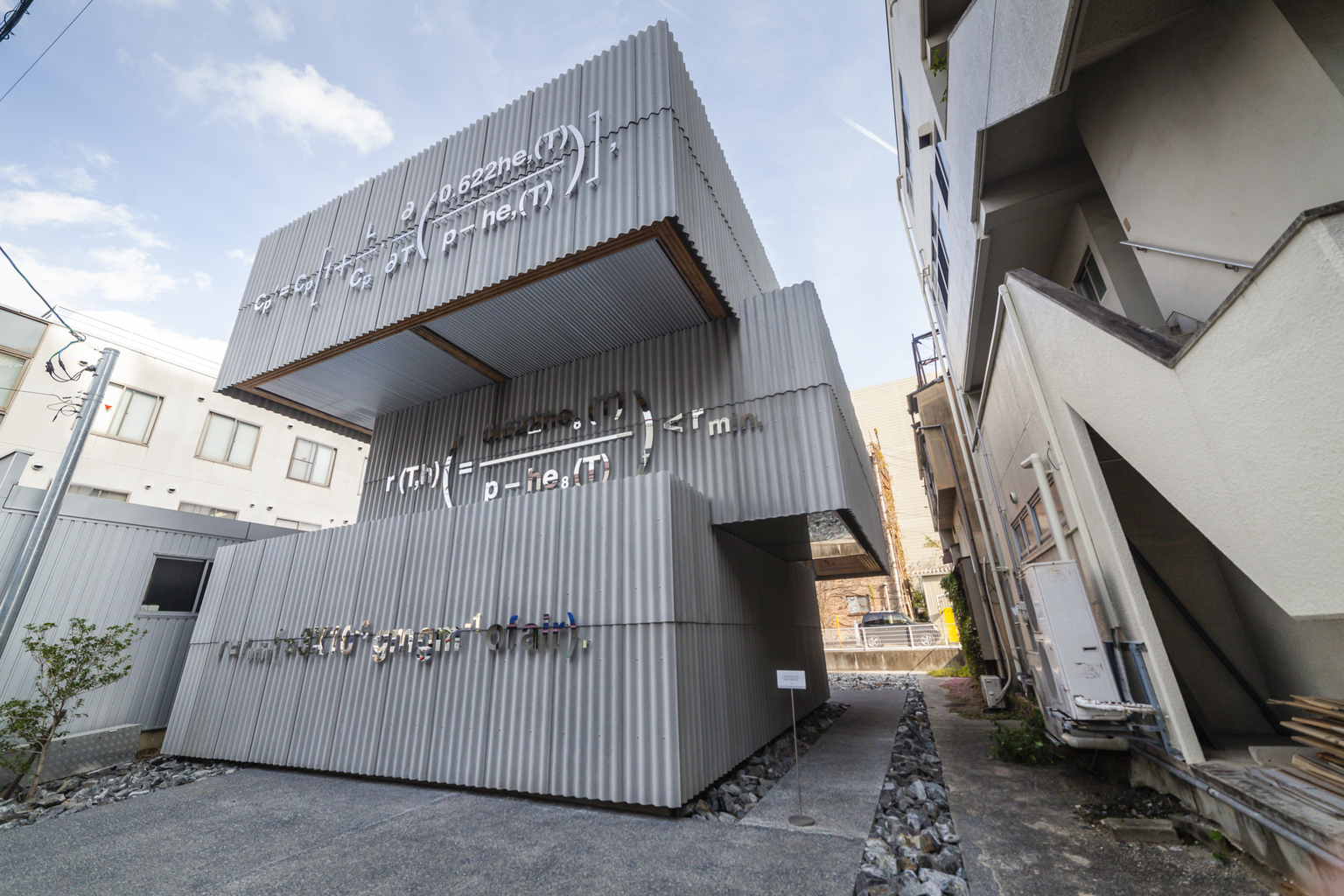
A&A Liam Fuji “The Manabe Equation House”
A&A Liam Fuji “The Manabe Equation House”
Another hotel which is part of the successful and popular A&A project is A&A Liam Fuji “The Manabe Equation House” which is the result of a collaboration between Liam Gillick and Mount Fuji Architects Studio. Based on the research of Nobel Prize-winning meteorologist Syukuro Manabe, his equation is exhibited not only on the outer wall of the hotel but also within the rooms themselves. The design leitmotif is an intersection between science, art and architecture with emphasis on climate change concerns. The hotel, then, is transformed into an interactive art piece where complex and labyrinthine routes are designed for guests to think and hesitate while interacting with the structure. “The Manabe Equation House” is Gillick’s creative homage to the world-renowned Japanese scientist.
9-2-1 Tenjincho, Kita-ku
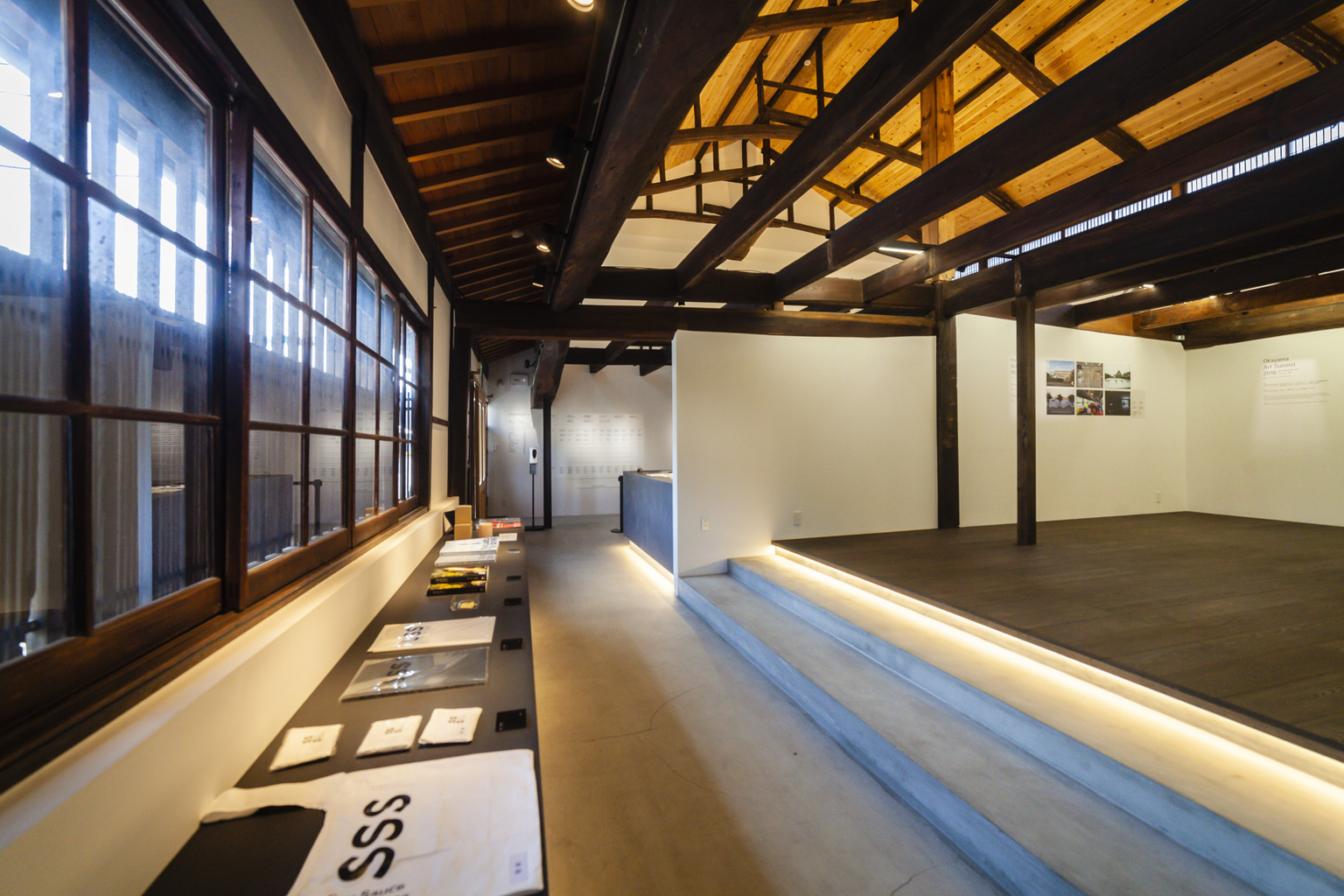
Teamlab: Tea Time in the Soy Sauce Storehouse
Teamlab: Tea Time in the Soy Sauce Storehouse
The name teamLab will be no stranger to most Tokyoites. Wowing visitors through its various cutting-edge art and immersive museums for some years now, many will be pleasantly surprised to hear that the art collective is behind the first exhibition being held at Former Fukuoka Soy Sauce Factory, a historical Meiji Era-building which used to be a soy sauce brewery, and has subsequently been renovated by the Ishikawa Foundation into a cultural facility called Fukuoka Shoyu Gallery. The visually stunning exhibition is appropriately named “Teamlab: Tea Time in the Soy Sauce Storehouse” and features a number of installations such as “Floating Lamps in Spontaneous Order – the Old Soy Sauce Storehouses” which features numerous Venetian glass lamps on water. Visually arresting and provoking all the senses this is a must-visit for fans of teamLab and those interested in installation art.
17-35 Yuminocho, Kita-ku
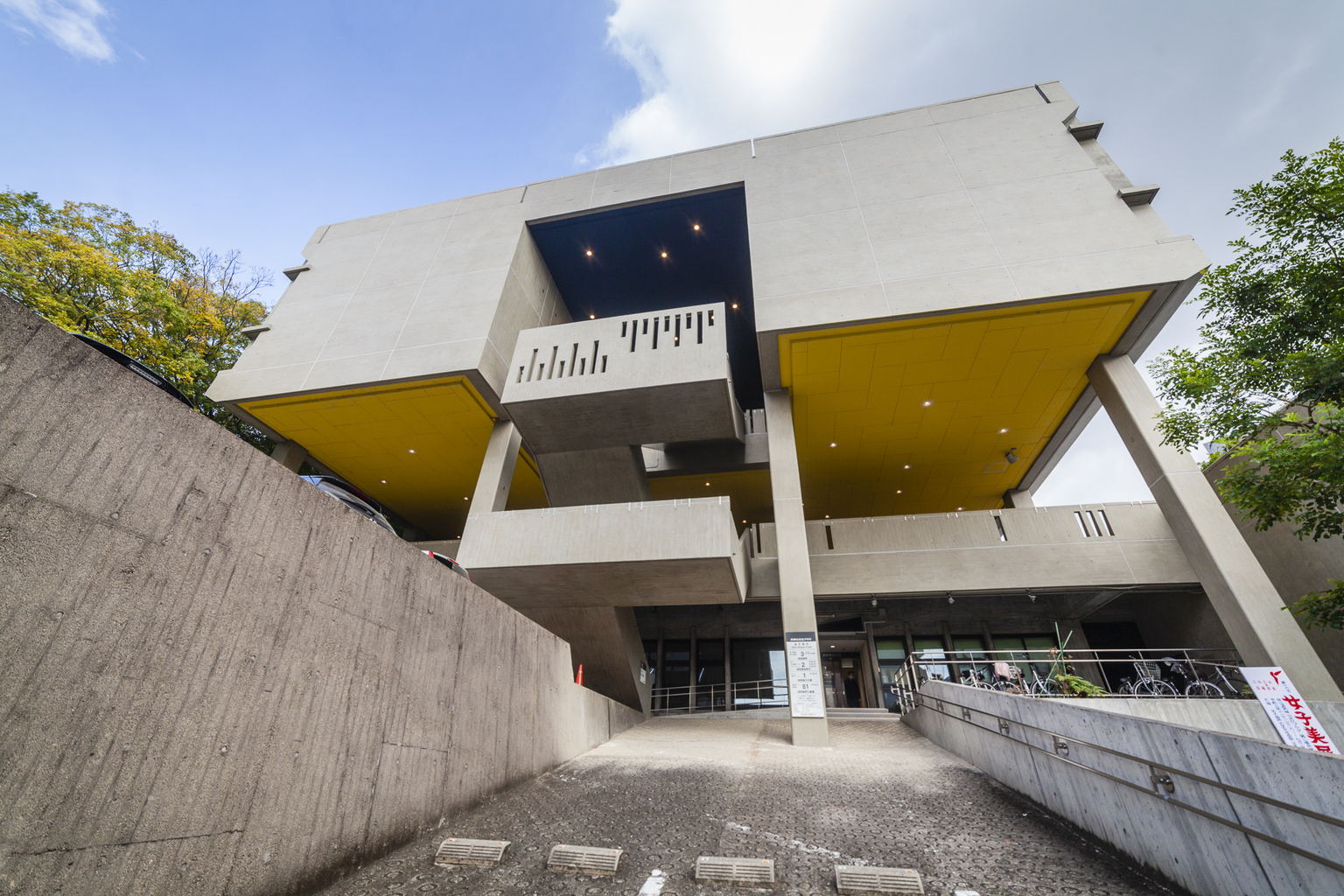
Tenjinyama Cultural Plaza of Okayama Prefecture
Tenjinyama Cultural Plaza of Okayama Prefecture
Designed by modernist architect Kunio Maekawa, Tenjinyama Cultural Plaza of Okayama Prefecture, managed by The Okayama Prefectural Cultural Federation, is a huge facility which serves as a base for cultural activities and information for local residents and visitors. Replete with a library, five exhibition rooms, a 270-seat hall, five practice rooms, two meeting rooms and a cultural information center visitors are encouraged to browse the expansive selection of art exhibition catalogs. Tenjinyama Cultural Plaza of Okayama Prefecture promotes independent activities for local artists and theater companies from the prefecture have a venue to showcase experimental and innovative work. The space, built in 1962, was renovated in 2005 but still retains Maekawa’s singular aesthetic vision and there are clear references and an aesthetic ode to Le Corbusier whom Maekawa served as an apprentice to in the late 1920s.
8-54 Tenjincho, Kita-ku
Oumi no Sato
For a touch more rest and recreation head to Oumi no Sato, a farm situated in the Tomiyoshi area of Okayama Prefecture known for its warm climate, rich soil and for one of Japan’s most sought-after fruits, the Shimizu Hakuto White Peach. Oumi no Sato is also available as a residence and guests can enjoy farm life alongside a beautiful Japanese garden, tea ceremony and sushi experiences and activities for children such as a small garden-zoo. This tranquil and lush location also hosts a cafe which serves up locally sourced fruit and vegetables. Oumi no Sato is ideal for those aiming for some quiet time and a desire to be off the beaten track and at one with nature.
2157 Tomiyoshi, Kita-ku
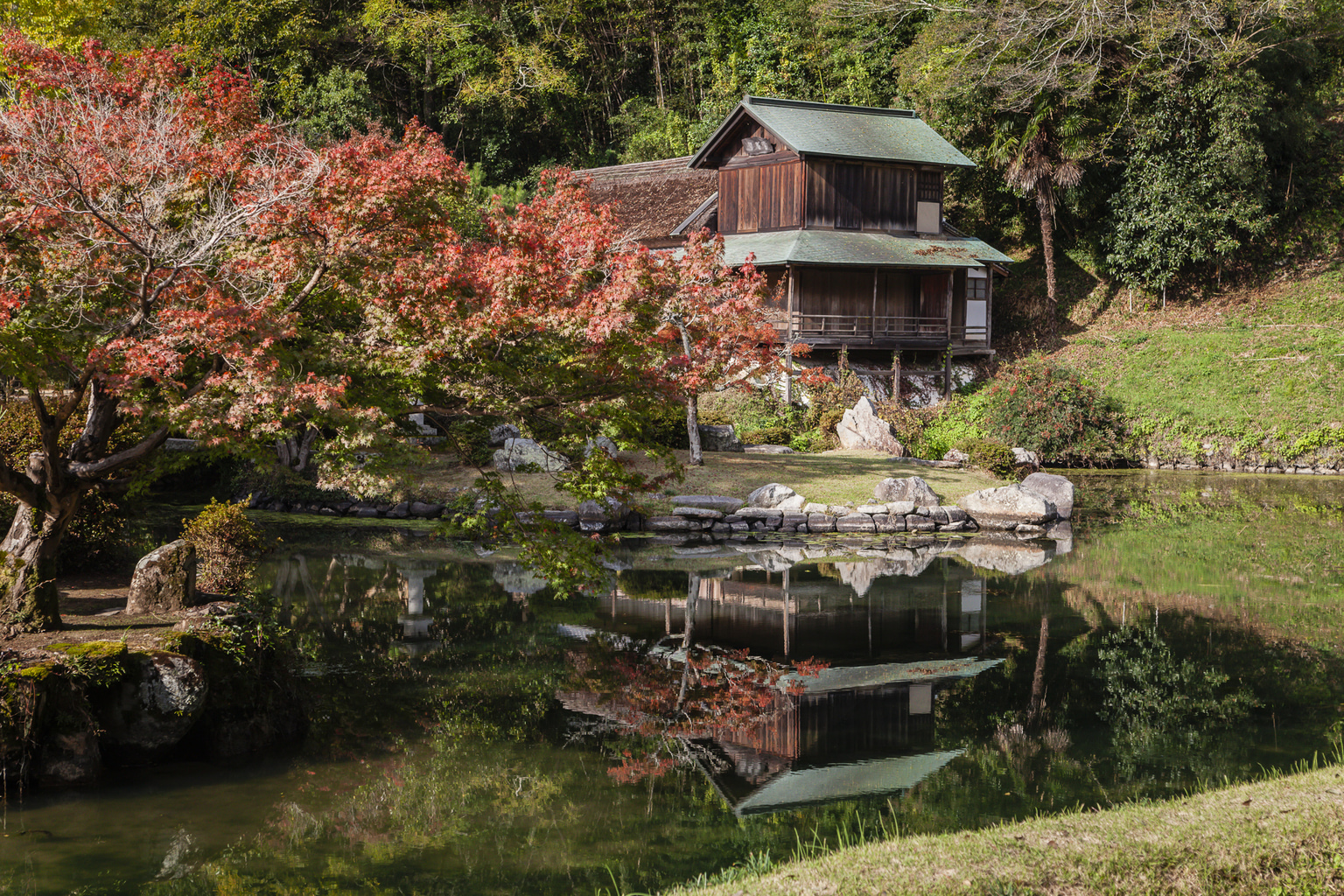
Omizu-en
Omizu-en
For those with a predilection for gardens then head to Omizu-en, the former garden of the Kinoshita clan, former lords of the local Ashimori domain. Designated as a place of scenic beauty by Okayama Prefecture in 1959, Omizu-en is one of the most important gardens within the prefecture along with Korakuen in Okayama City and Shuurakuen in Tsuyama City. This pond garden is calming and peaceful and has some spectacular views which make it well worth the visit.
803 Ashimori, Kita-ku
Old Residence of Samurai of Ashimori Clan
Okayama Prefecture is, naturally, steeped in history and for visitors interested in samurai the Old Ashimori clan samurai residence, which was designated in 1956 as an Important Cultural Property by Okayama Prefecture, is a fascinating location where you can see and feel the past. This is the only sample of a samurai residence in Okayama Prefecture, and it is kept practically in the same original condition and as such, holds a huge historical value. The date of construction is unknown but it’s estimated to have been sometime in the mid-Edo Period (1651-1745).
752 Ashimori, Kita-ku
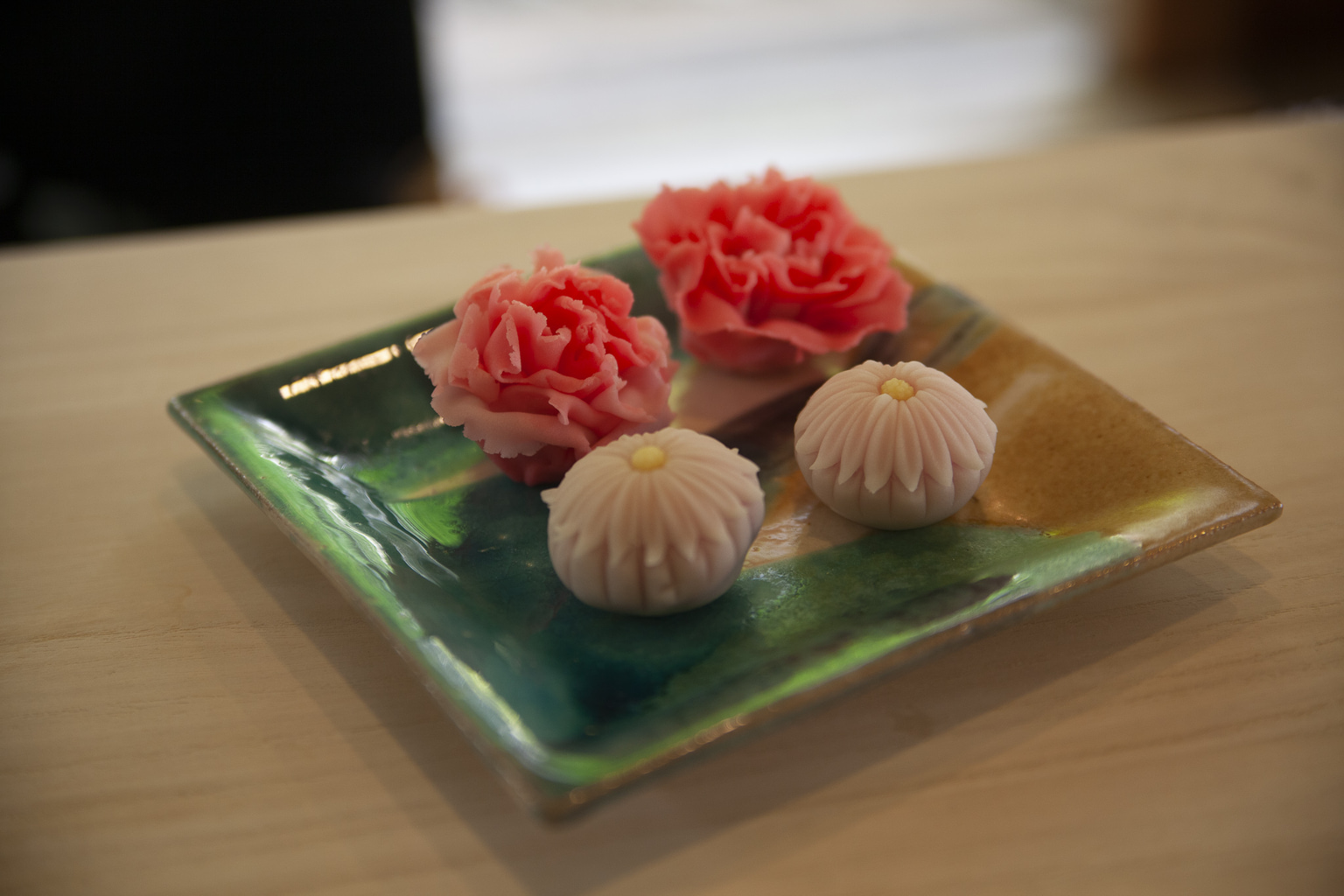
Urashima Honpo
Urashima Honpo
After all the history, castles, farms, gardens and hotels it would be rude not to try some local treats which can be found at the legendary Urashima Honpo, a traditional Japanese sweets shop (wagashi) established in Okayama City over 80 years ago by the Miyake family. Serving both traditional and contemporary varieties of sweets the store also offers customers the opportunity to participate in workshops where they can learn how to make traditional sweets which are perfect accompaniments to matcha and the ancient art of tea ceremony.
3-11-18 Kitanagaseomote-cho, Kita-ku
Okayama, then, is a beautiful setting which offers visitors a wealth of activities and settings in which to appreciate art, take a rest and to enjoy the culture and history which is engrained in its soil and rich, dramatic landscapes.
Photos by Toshiko Sakurai
Sponsored Post

